[MHD objabbr]
(Long Count, Julian)
[QRGStA]
(with Drawings)
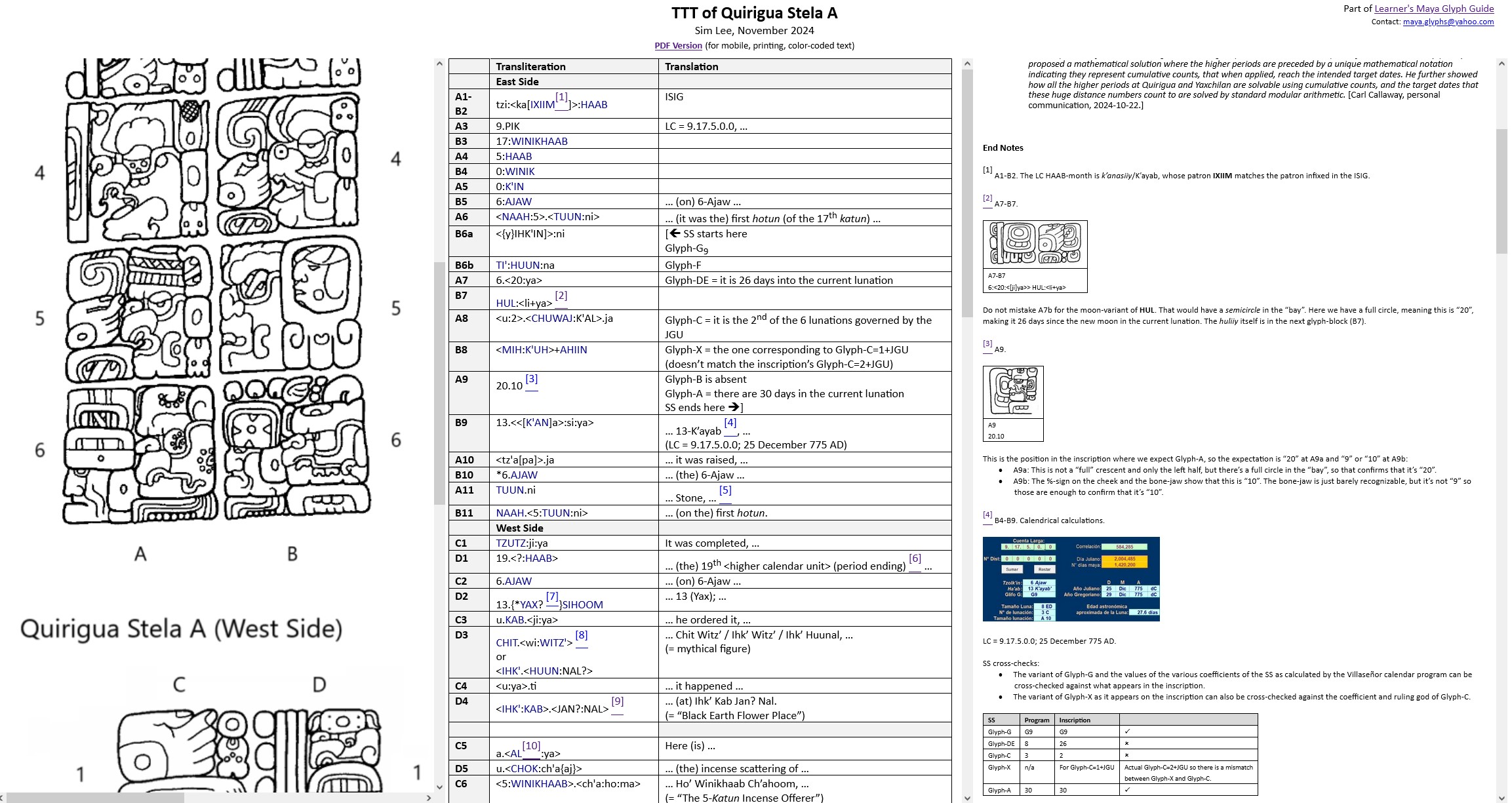
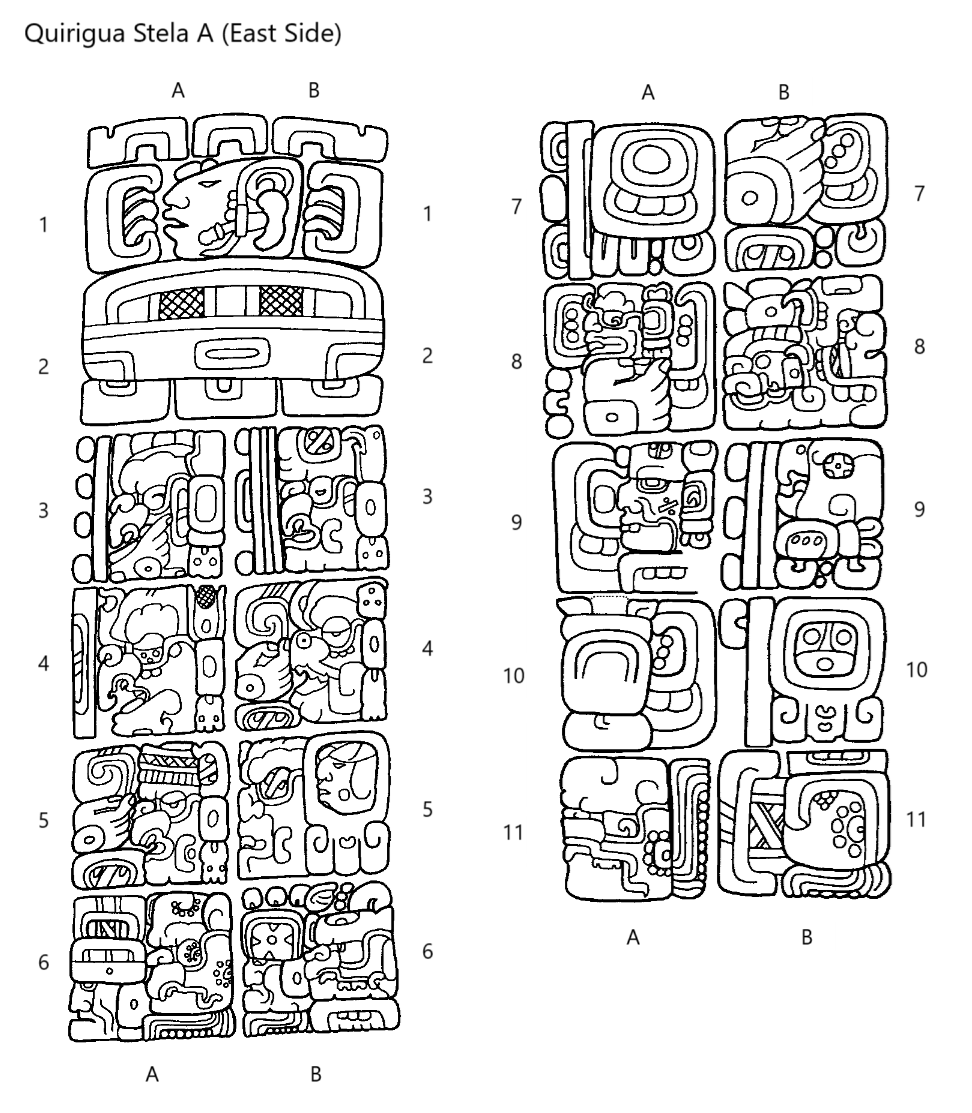
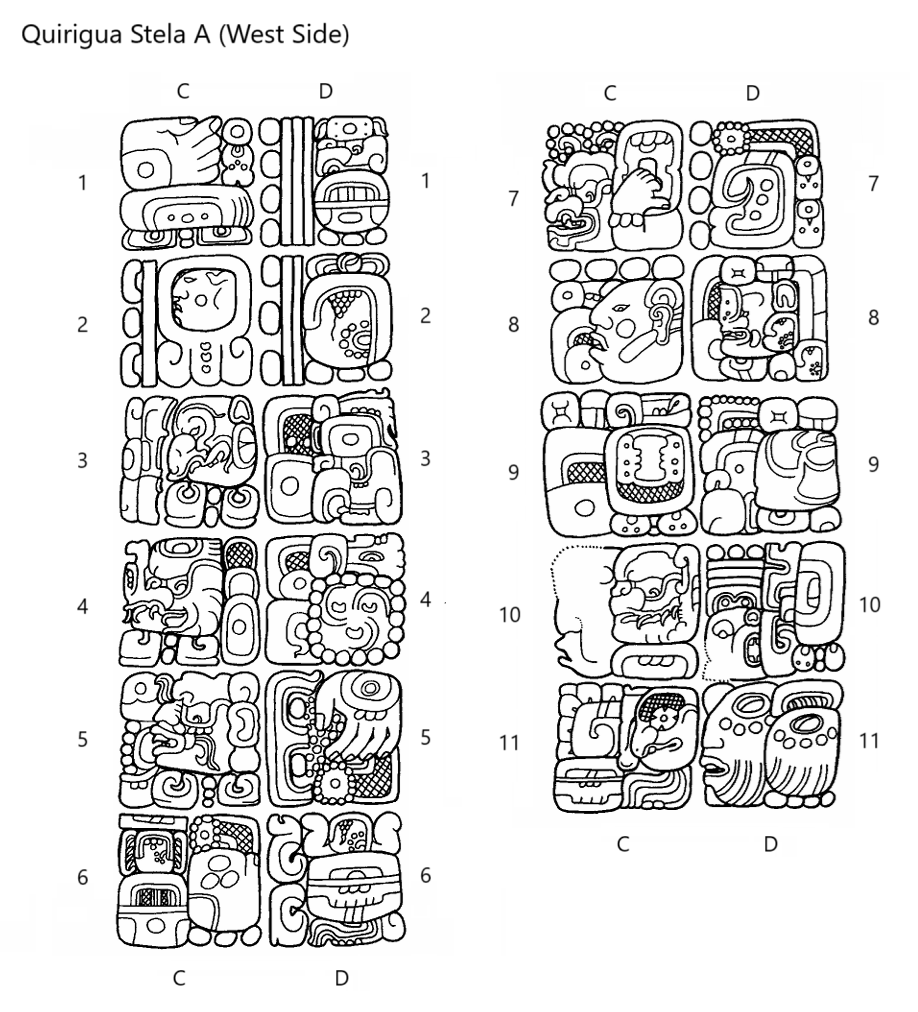
[English only]

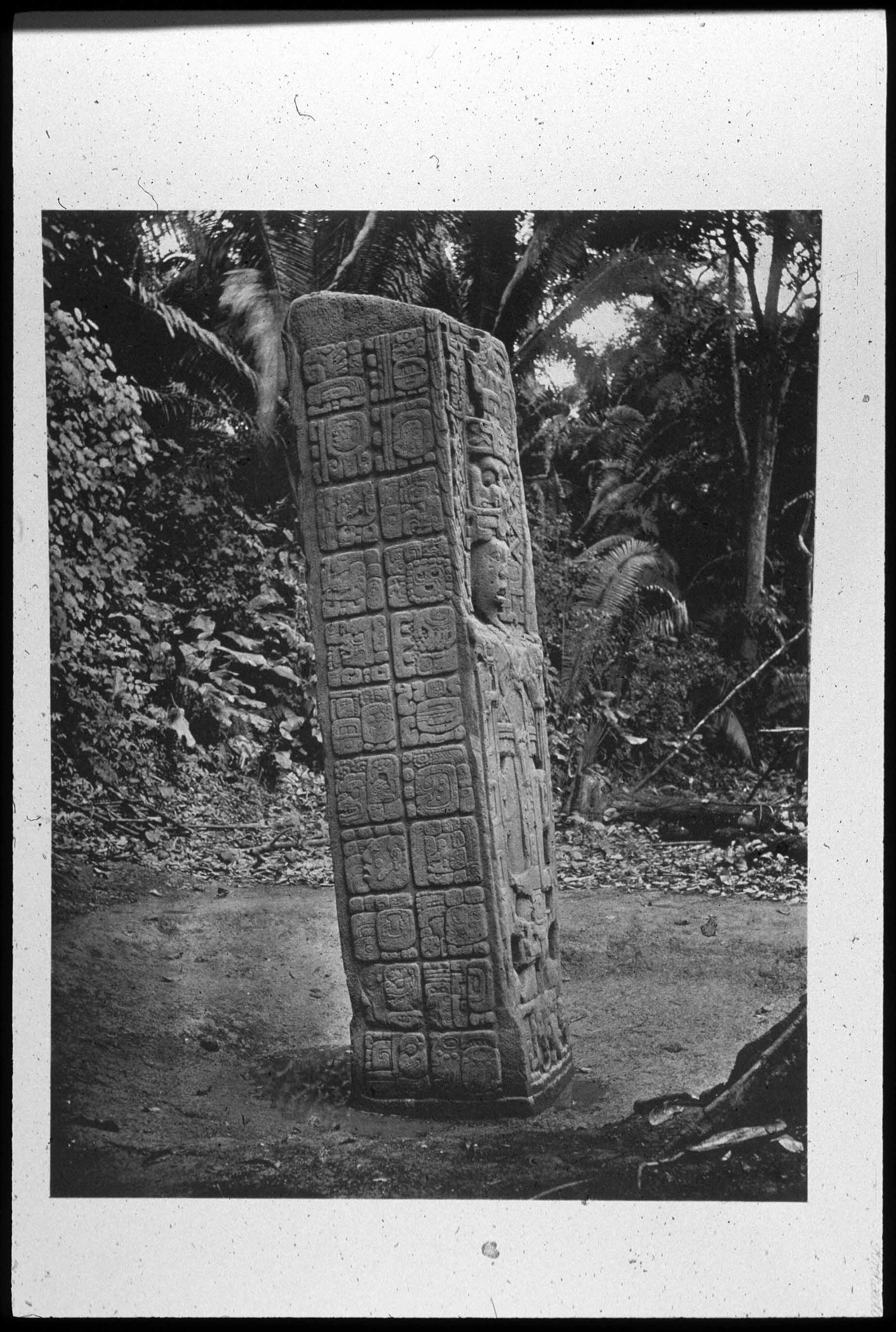

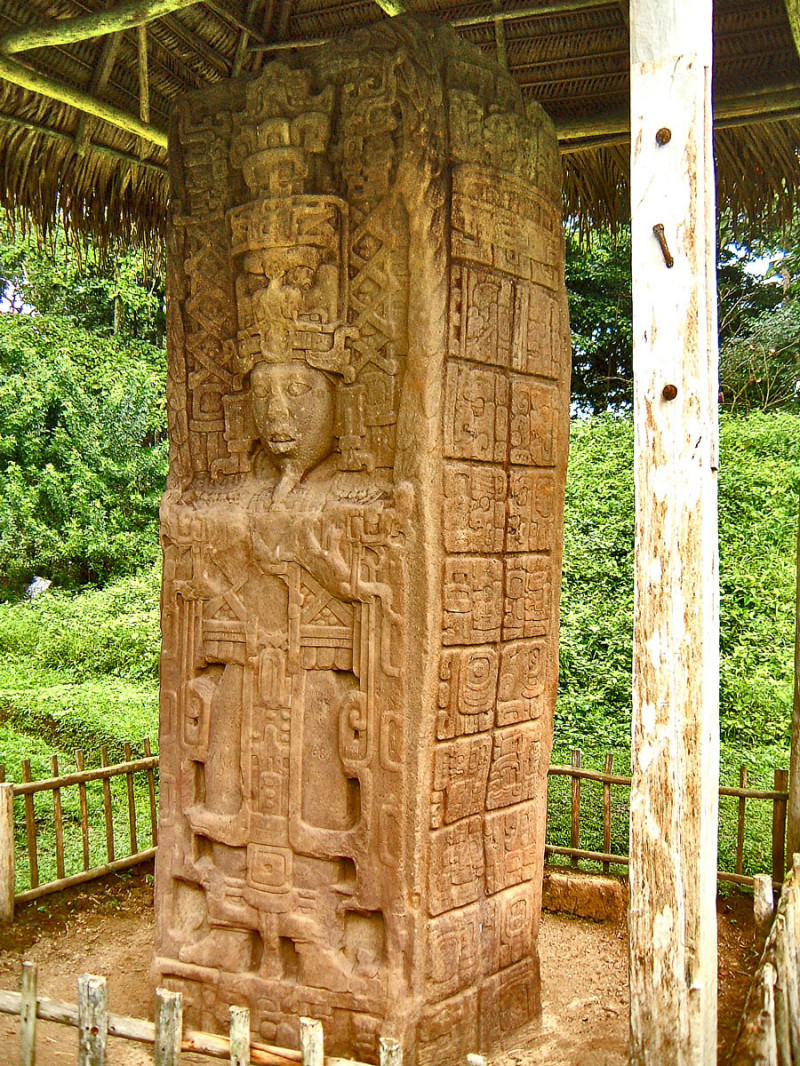
K’ahk’ Tiliw Chan Yopaat was the ruler who rebelled against his Copan overlord, Waxaklajuun Ubaah K’awiil (he captured and executed him). There’s a reference to K’ahk’ Tiliw Chan Yopaat being the captor of said Waxaklajuun Ubaah K’awiil, in the form of the Ucha’an title, but there’s no explicit reference here to the rebellion nor to the latter’s capture or execution.
There’s also a period ending in the very remote past. It’s expressed in “extra-high calendar units.”
The inscription gives only the generic name of Stela A, “6-Ajaw Stone,” based on the Tzolk’in date of its raising.
K’ahk’ Tiliw Chan Yopaat was given the nickname “Cauac Sky” (or with updated spelling, “Kawak Sky”) in older literature, before the successful decipherment of his name. Similarly, Waxaklajuun Ubaah K’awiil was formerly referred to as “18 Rabbit” or “18 Jog” (a melding of “Jaguar” and “Dog”).
09.17.05.00.00
0775-12-25
Date(s) in inscription:
09.17.05.00.00
0775-12-25
[QRGStC]
(with Drawings)

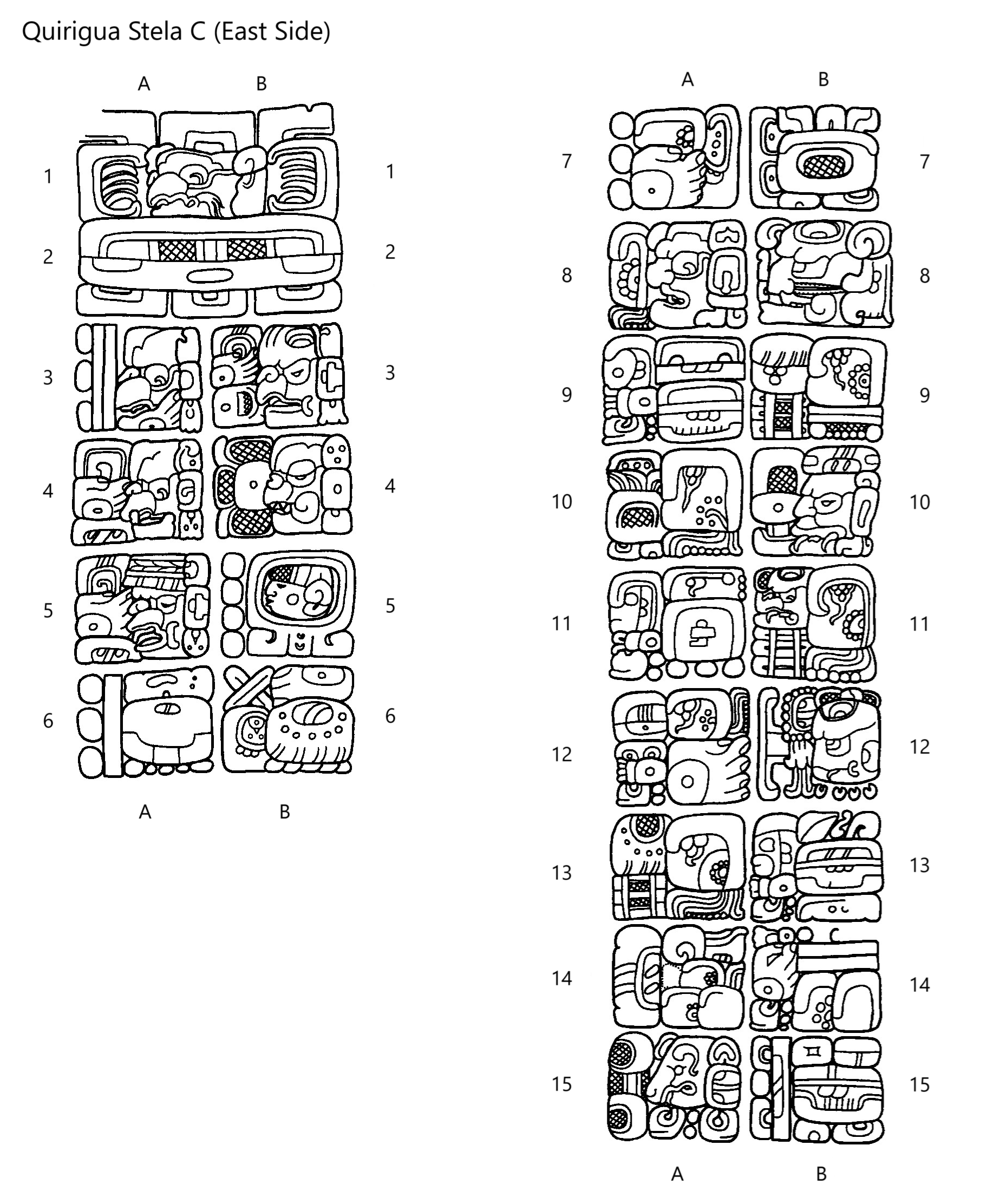
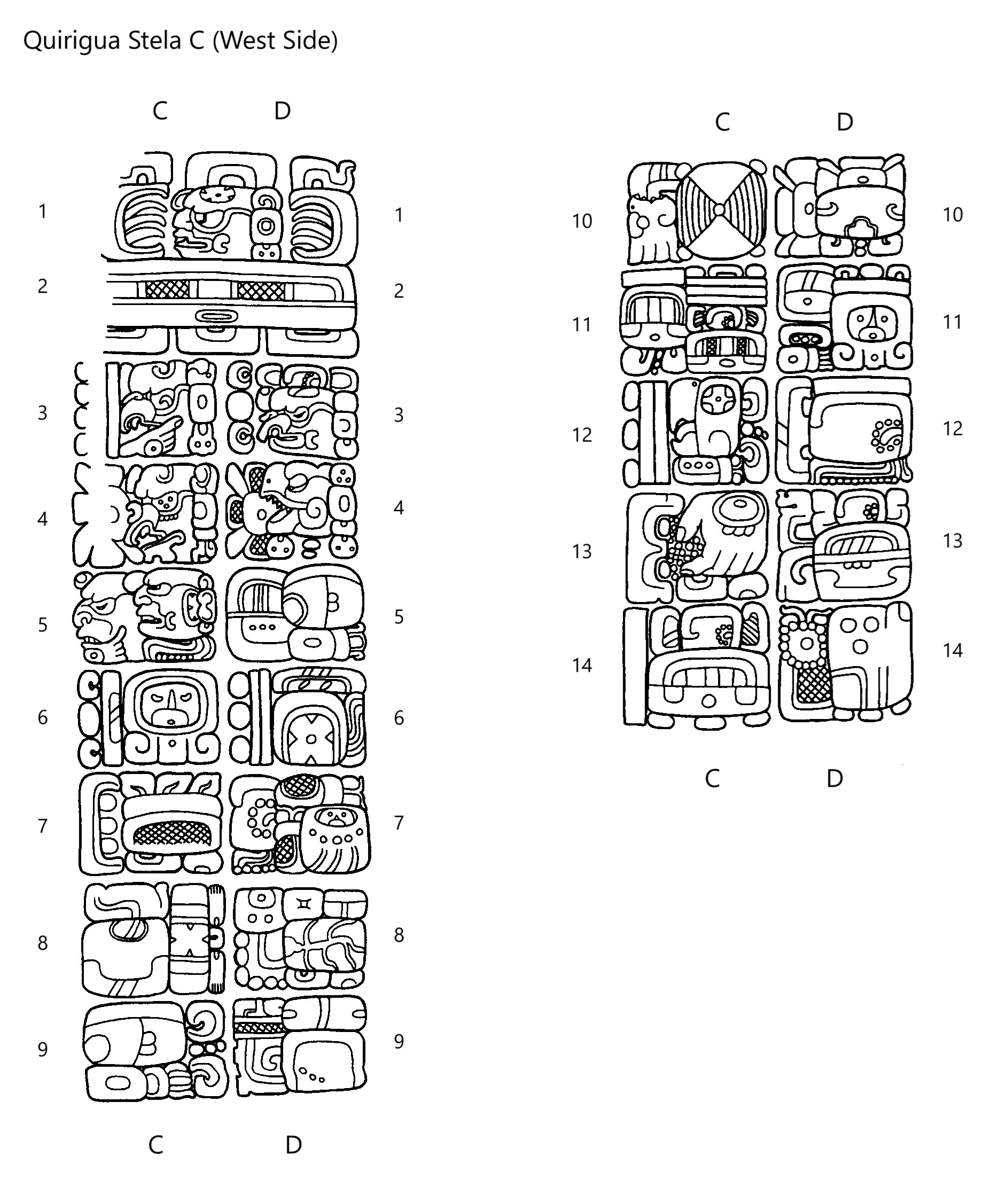
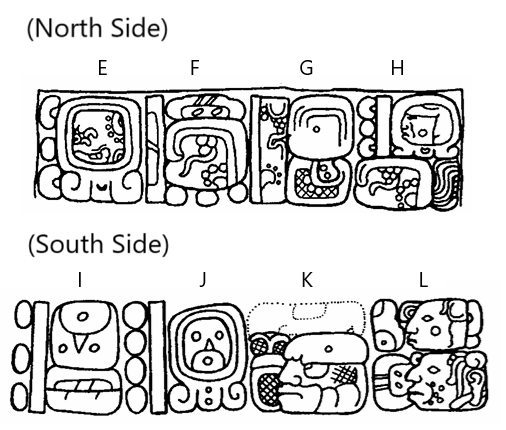
[English only]
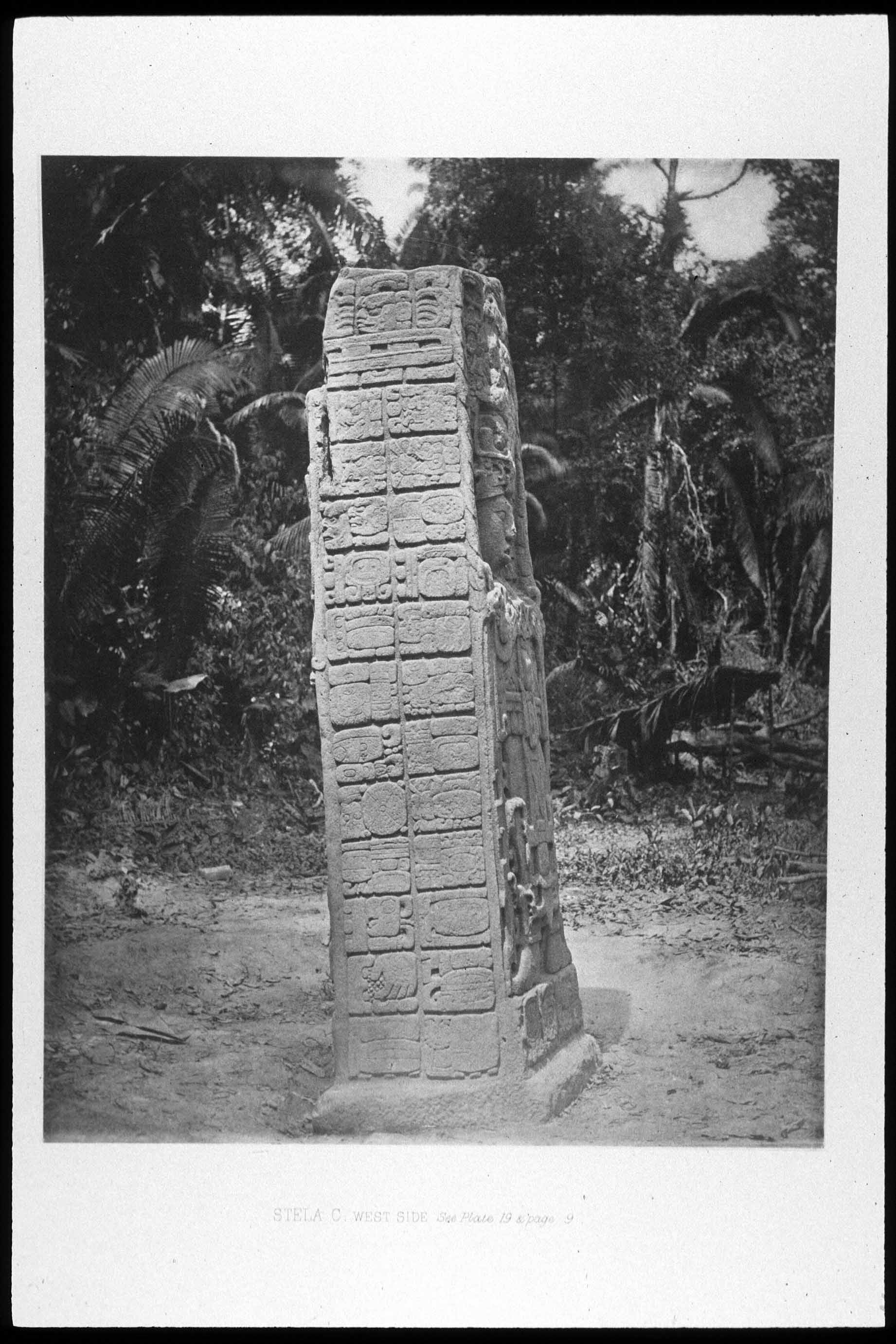
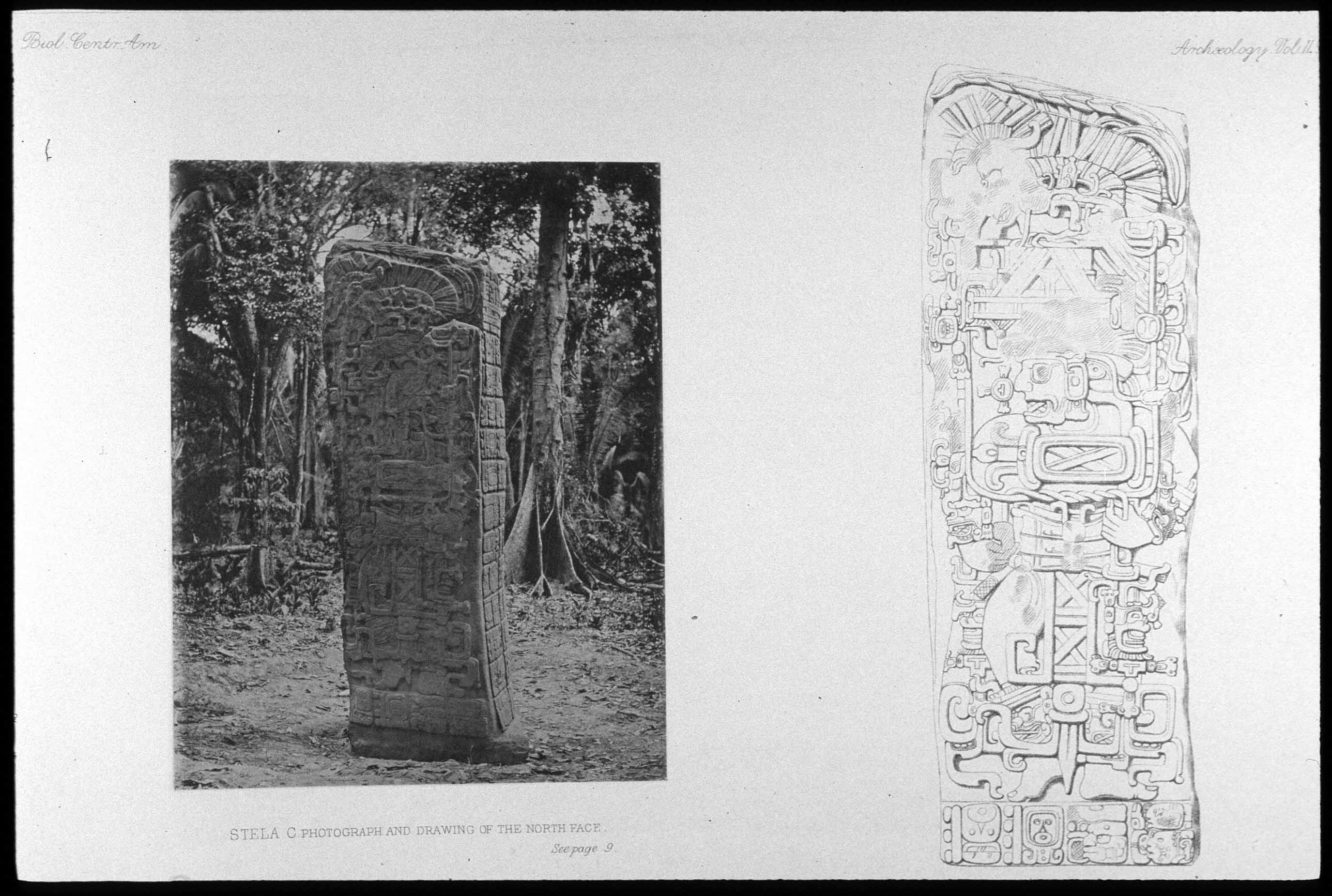
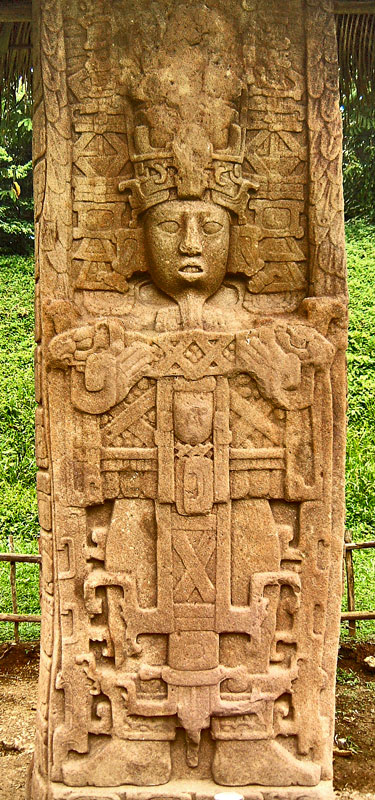
It also recounts two events in historical time. The first was the raising of a stela by the Quirigua ruler Tutum Yohl K’inich, on the occasion of the katun period ending in 455 AD (9.1.0.0.0). The second was a scattering ritual about 340 years later, on the occasion of the hotun period ending in 775 AD (9.17.5.0.0). This ritual was performed by another Quirigua ruler, K’ahk’ Tiliw Chan Yopaat. He commissioned Stela C, and the scattering ritual he performed was in connection with the raising of this stela.
Lastly, it mentions the dressing of the stone that would eventually end up as Stela C. This is followed by a ritual offering to the Hero Twins. Both events were also in 775 AD, just a few months prior to the raising of Stela C.
The inscription gives only the generic name of Stela C, “6-Ajaw Stone,” based on the Tzolk’in date of its raising.
09.17.05.00.00
0775-12-25
Date(s) in inscription:
00.00.00.00.00 =
13.00.00.00.00
-3114-08-14
09.01.00.00.00
0455-08-27
09.17.04.10.12
0775-07-30
09.17.04.11.00
0775-08-07
09.17.05.00.00
0775-12-25
[QRGStD]
(with Drawings)

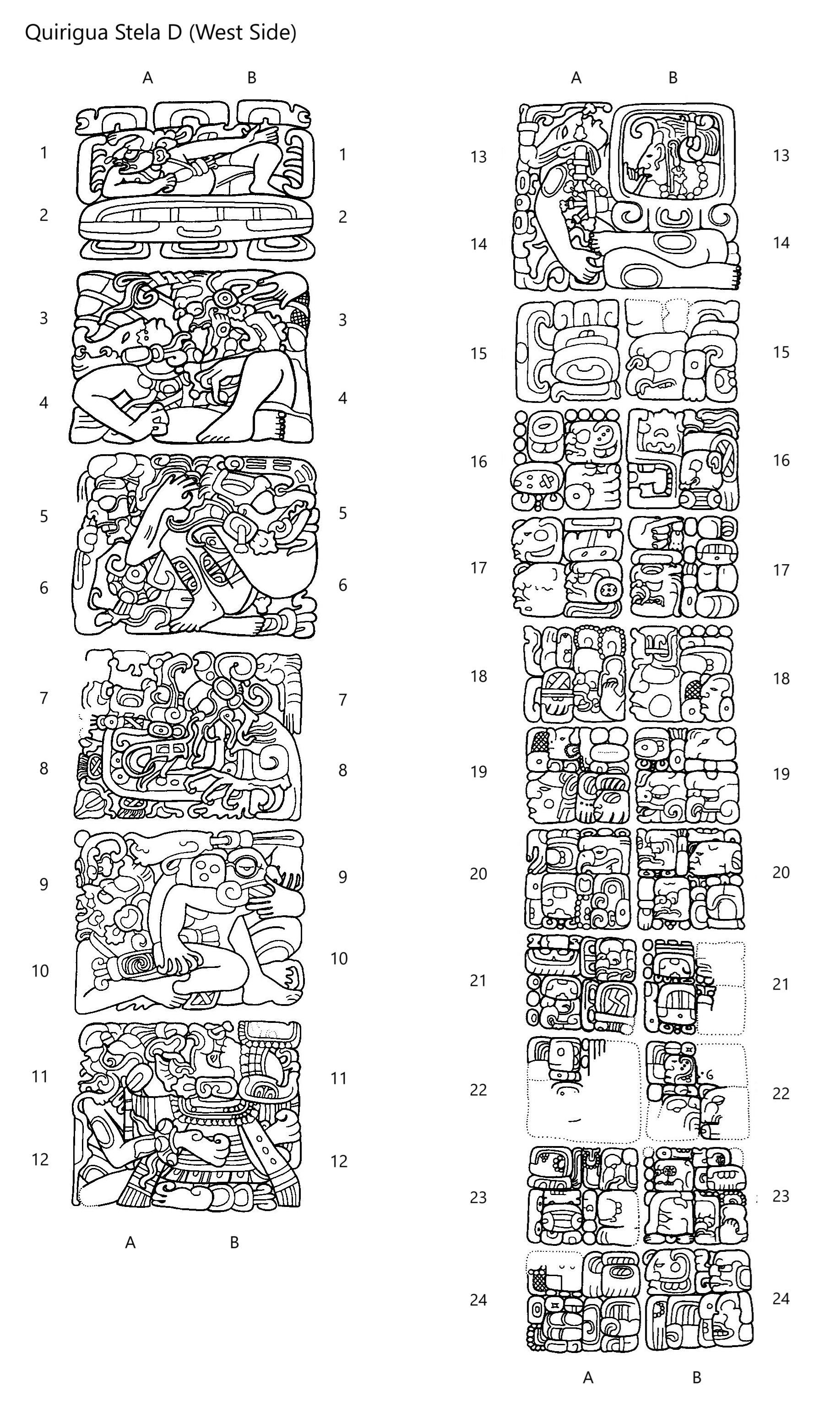
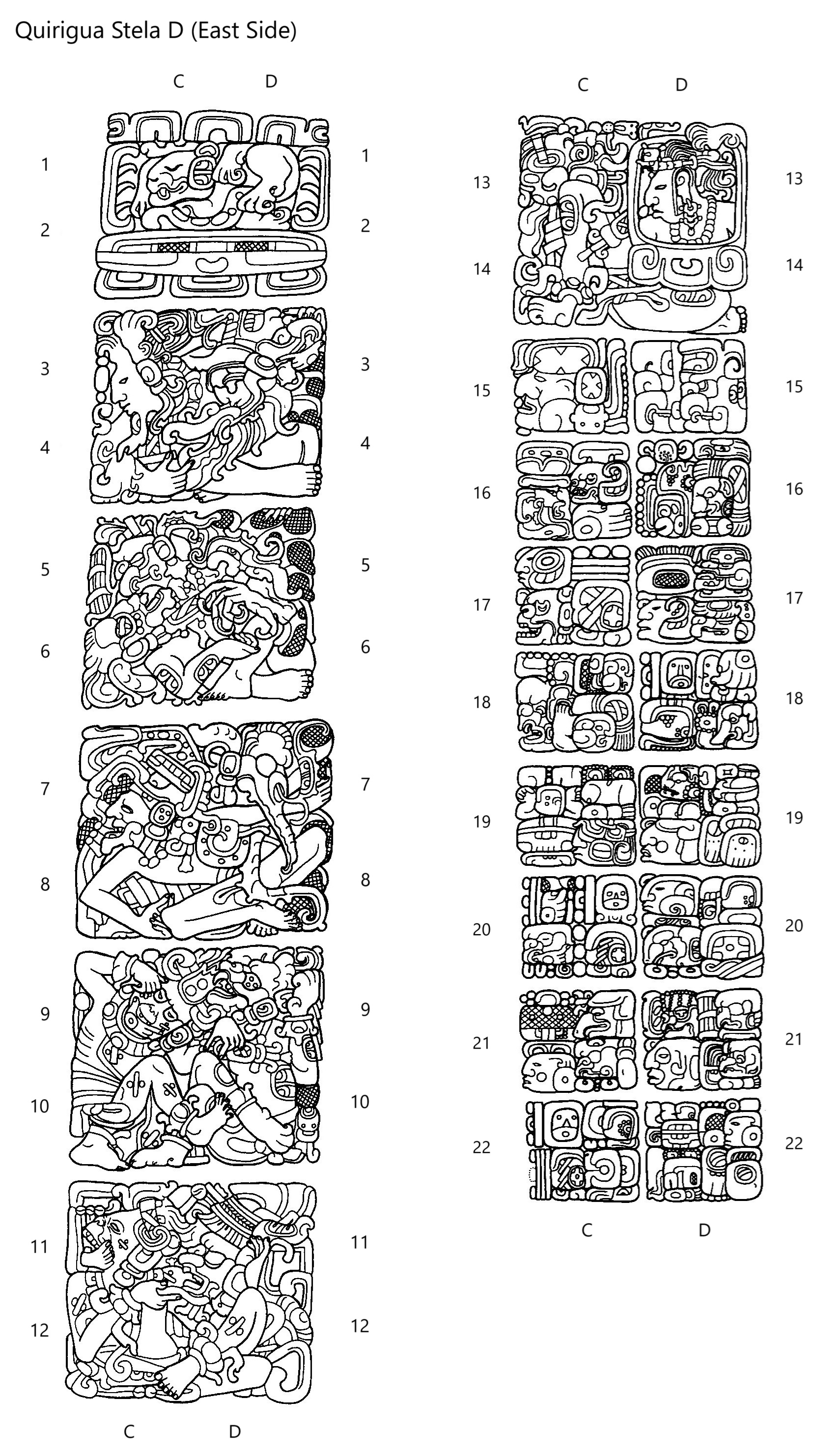
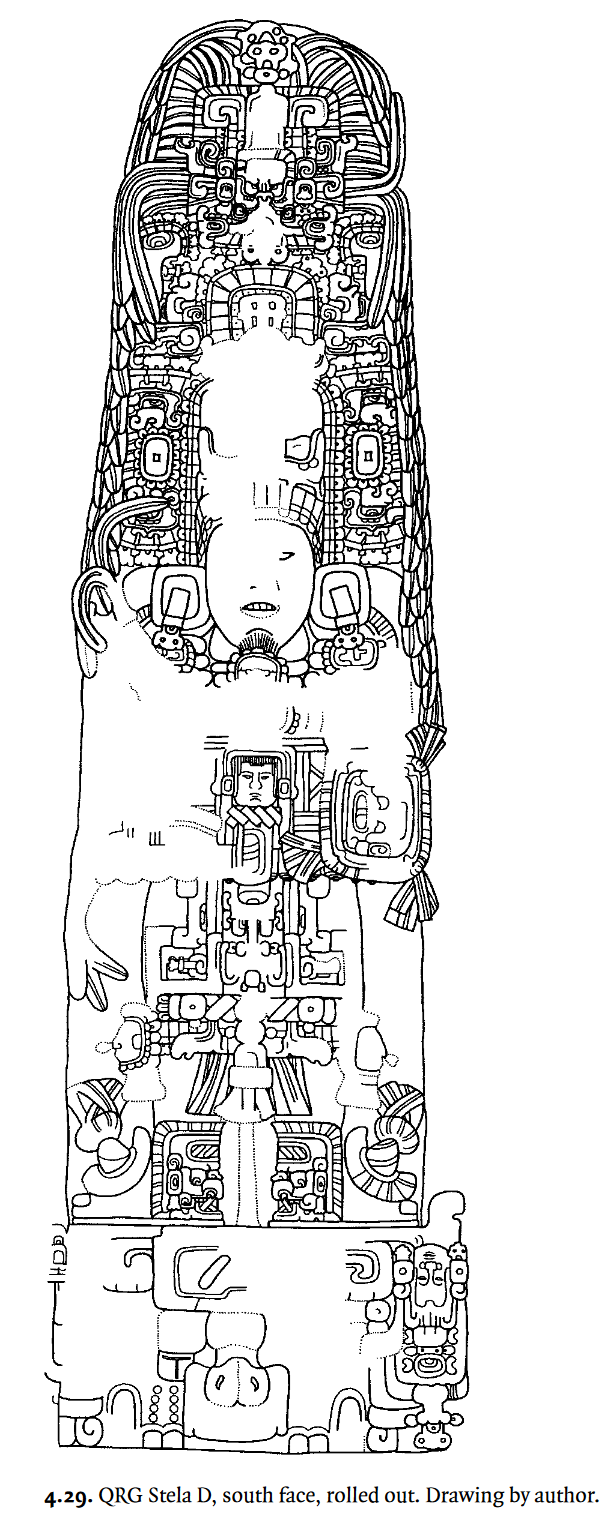
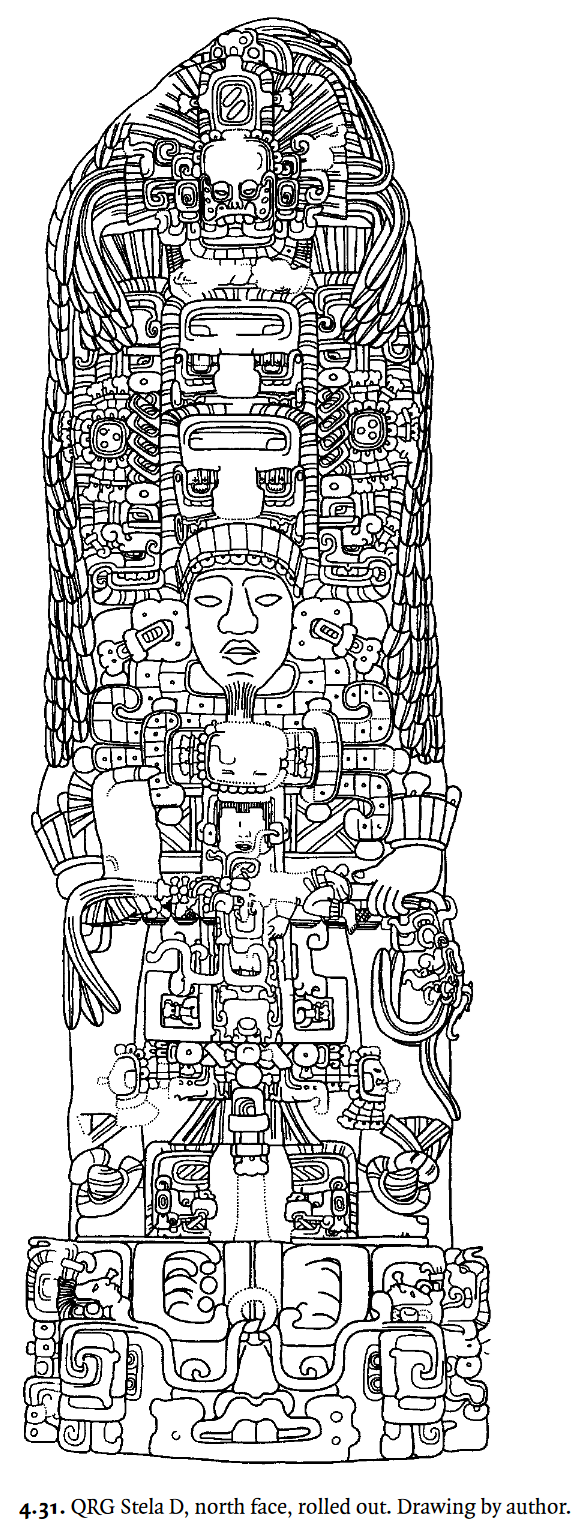
[English only]








The inscription continues on the east side of the monument, referring again to the wi’ hotun period ending and the incense scattering ritual of the west side in 766 AD, but this time adding that Stela D was raised on this occasion by K’ahk’ Tiliw Chan Yopaat.
The inscription ends by using “extra-high calendar units” to describe an event 13 kinchiltuns (more than 3 million years) earlier, in the mythical past. This event is then tied to the wi’ hotun period ending of 766 AD, which had already been mentioned twice – on the west and earlier on the east side of the monument.
The inscription gives both the generic and the non-generic name of the stela. The generic name was “7-Ajaw Stone,” based on the Tzolk’in date of its raising. The non-generic name was K’an Naah Chan Yopaat (= “Yellow/Precious House (in the?) Sky Yopaat”).
This inscription is similar in structure and content to those of QRG Stelae E and F. In all three, the west side recounts “current” events from the Late Classic period, while the east side recounts events from the remote past, with the later events paralleling the earlier, mythical ones. One distinctive feature of the inscription is that both the coefficients as well as the units of the ISIGs’ LC’s (there are two) are full-figure glyphs, and they interact with one another.
09.16.15.00.00
0766-02-15
Date(s) in inscription:
09.16.13.04.17
0764-06-02
09.16.15.00.00
0766-02-15
[QRGStE]
(with Drawings)

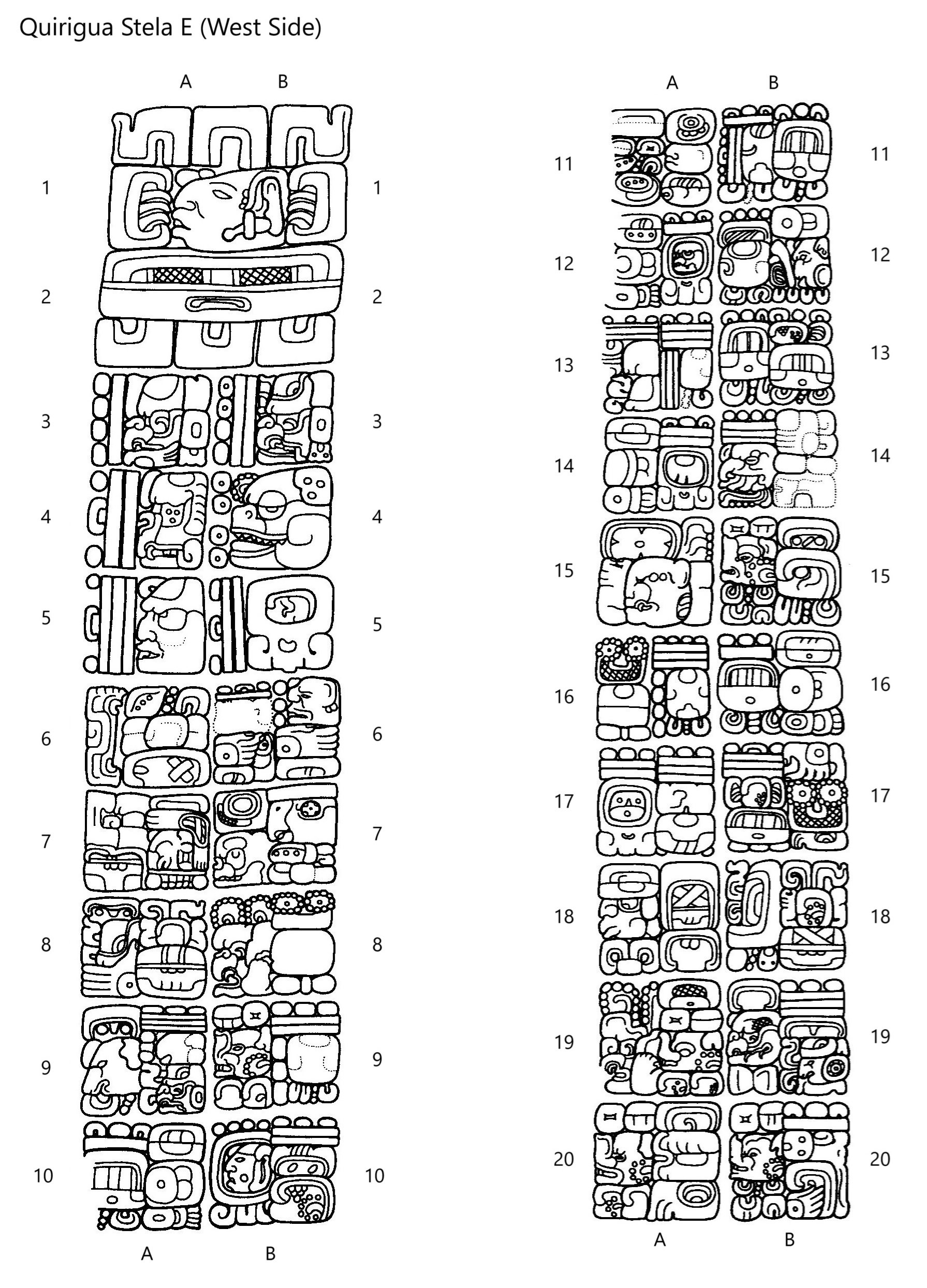
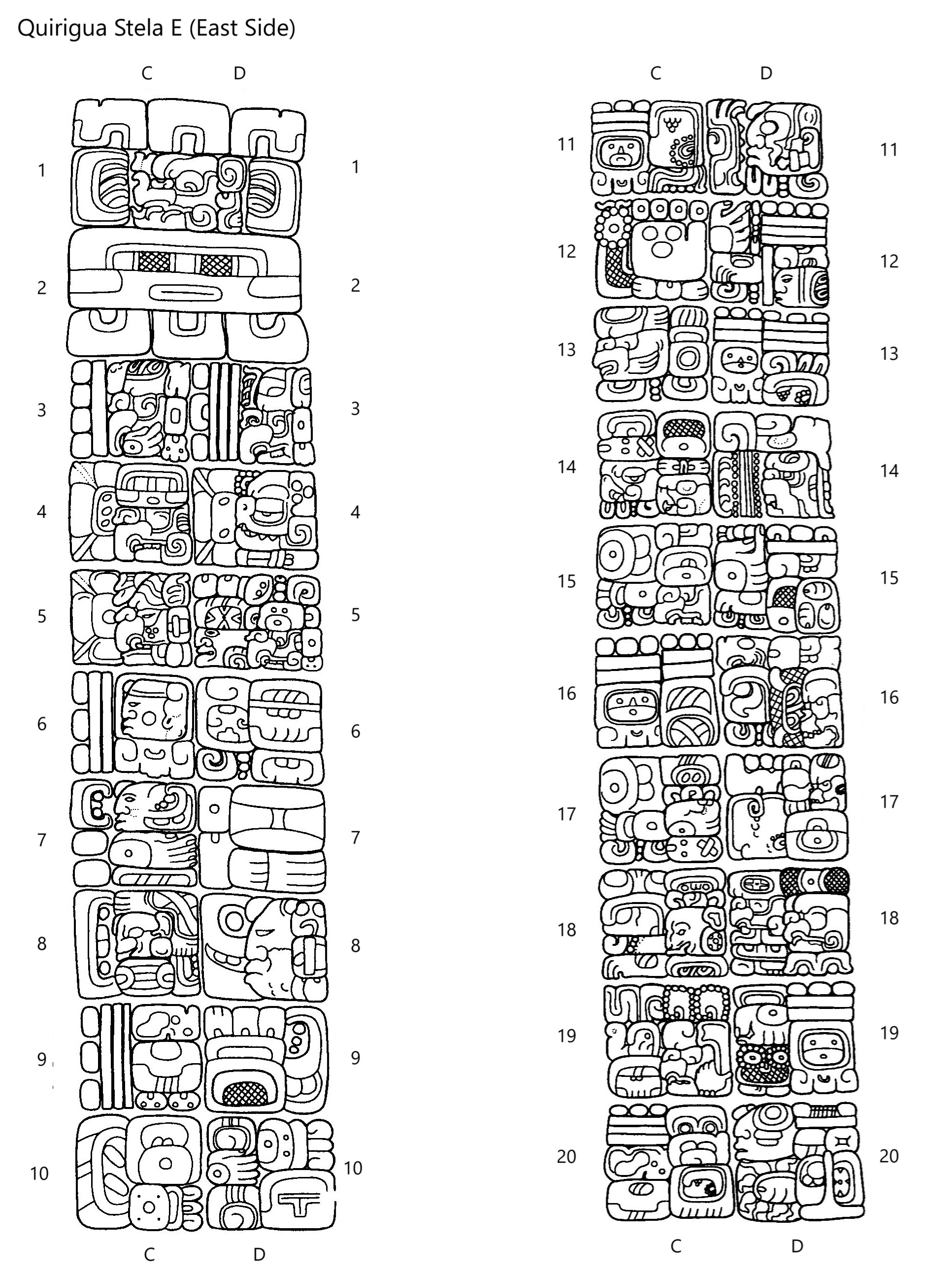
[English only]




More than two decades later, in 762 AD, K’ahk’ Tiliw Chan Yopaat oversaw a ritual in which “Sun Raiser Jaguar,” the ruler of Xukuy (a still-unidentified site), grasped a ritual object. This implies the vassalage of the latter to the former, but the nature of the ritual object remains unclear. The inscription then recounts an incense-scattering ritual performed by K’ahk’ Tiliw Chan Yopaat at the 17th-katun period ending in 771 AD (9.17.0.0.0), witnessed by the aforementioned ruler of Xukuy.
The inscription continues on the east side of the monument, referring again the 17th-katun period ending in 771 AD. It adds that a stela (Stela E itself) was raised on this occasion by K’ahk’ Tiliw Chan Yopaat, who is given the somewhat unusual title of Chan Ch’ahoom (“The Four Ch’ahooms”). Two subsequent events are set in mythical time, both being just period endings. These events are expressed in “extra-high calendar units.” The text concludes with yet another reference to the 17th-katun period ending in 771 AD, repeating that K’ahk’ Tiliw Chan Yopaat performed an incense-scattering ritual. There’s also a mention of a burial ritual, possibly involving the children of some Quirigua lords, though the details are unclear.
The inscription gives the generic name of Stela E, “13-Ajaw Stone,” based on the Tzolk’in date of its raising, but it’s unclear if its non-generic name is given.
In structure and content, this inscription closely resembles that of Quirigua Stela F.
09.17.00.00.00
0771-01-20
Date(s) in inscription:
09.14.13.04.17
0724-12-29
09.15.00.00.00
0731-08-18
09.15.06.14.06
0738-04-29
09.17.00.00.00
0771-01-20
[QRGStF]
(with Drawings)

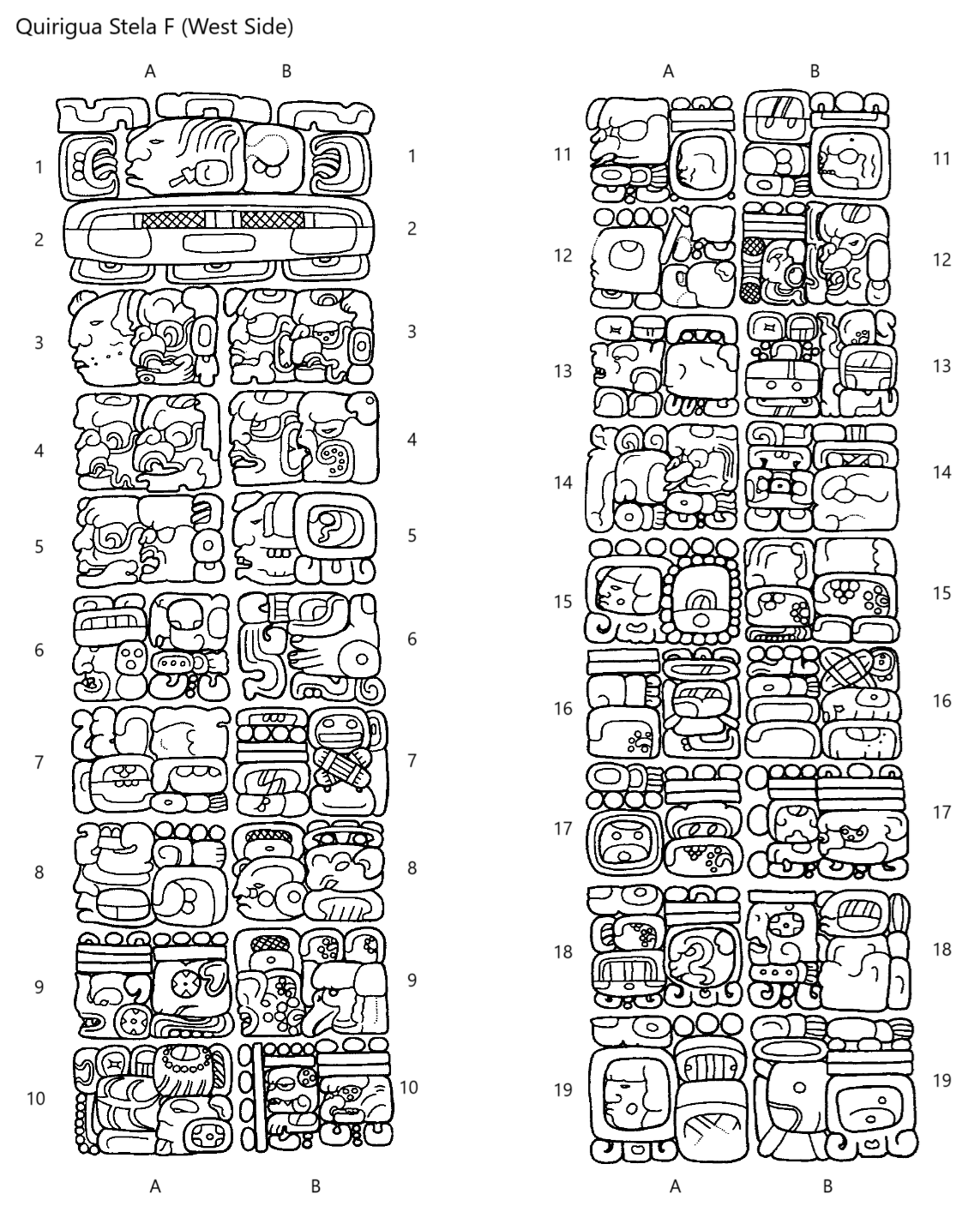
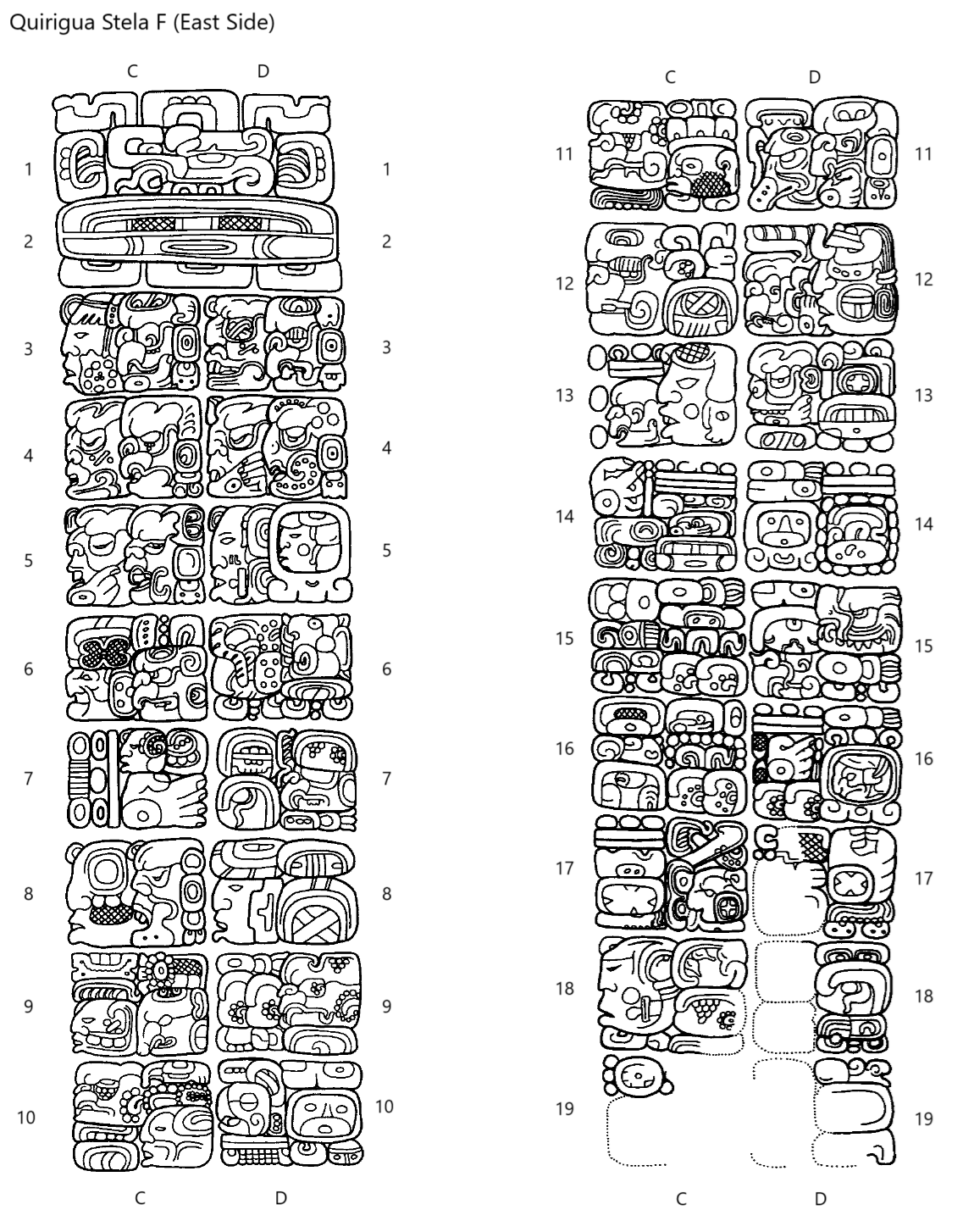
[English only]




The inscription continues on the east side of the monument, referring again to the last half-katun period ending of the west side in 761 AD, but this time adding that a stela (this one, Stela F itself) was raised and an incense scattering ritual was performed on that occasion, by K’ahk’ Tiliw Chan Yopaat. The inscription ends with two events, much further back in the past, including in the mythical time of the remote past. These events are expressed in “extra-high calendar units.” The latter of the two events involves another ritual beheading – seen, no doubt, as a parallel to the historical one of Waxaklajuun Ubaah K’awiil’s beheading by K’ahk’ Tiliw Chan Yopaat in 738 AD, as recounted at the start of this inscription.
The inscription gives both the generic and the non-generic name of the stela. The generic name was “1-Ajaw Stone,” based on the Tzolk’in date of its raising. The non-generic name was Pih Witziy Tuunil (= “8,000 ‘Heaping’ Stones”).
In structure and content, this inscription is remarkably similar to that of QRG Stela E.
09.16.10.00.00
0761-03-13
Date(s) in inscription:
09.14.13.04.17
0724-12-29
09.15.00.00.00
0731-08-18
09.15.06.14.06
0738-04-29
09.15.10.00.00
0741-07-26
09.16.10.00.00
0761-03-13
[QRGStI]
(with Drawings)

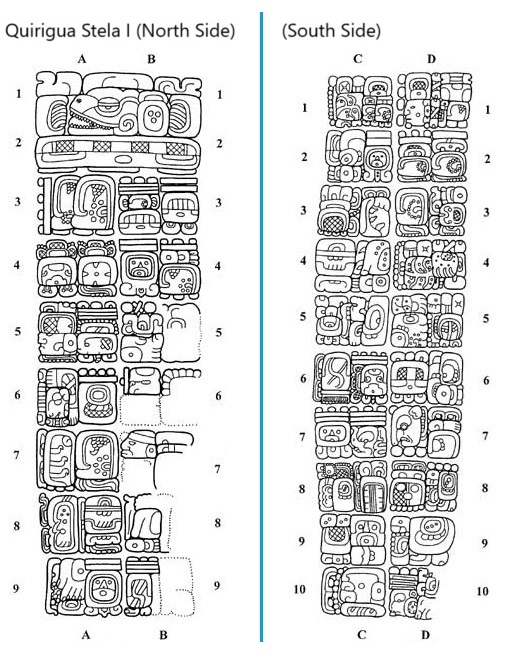
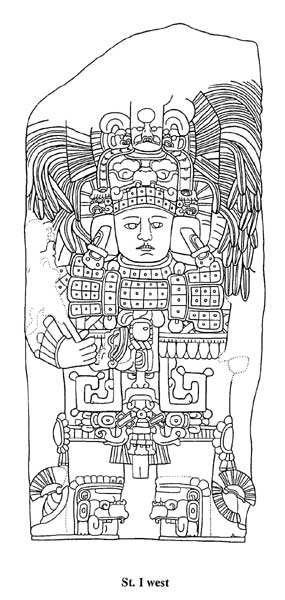
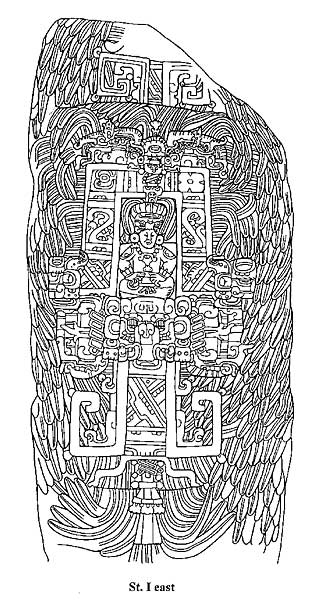
[English only]

A very interesting aspect of the earlier commemoration by K’ahk’ Tiliw Chan Yopaat was the presence of one Wamaw K’awiil – an obscure ruler of Calakmul, known only from this stela (Stela I) and one other (unprovenienced) monument. At a time when Calakmul’s archrival Tikal was having a resurgence, it may nevertheless be inferred that Calakmul was still trying to exert political influence beyond its borders, namely in Quirigua. This is because about seven years after the katun period ending commemoration which included the presence of Wamaw K’awiil, there was some drilling of fire in connection with the gods of Waxaklajuun Ubaah K’awiil, the ruler of Copan and the overlord of K’ahk’ Tiliw Chan Yopaat. The way this is worded on Stela I leads some epigraphers to think that this fire drilling was a hostile act and that Wamaw K’awiil’s earlier presence in Quirigua had something to do with it. The idea is that this fire drilling was followed, six days later, by the capture and ritual execution of Waxaklajuun Ubaah K’awiil by K’ahk’ Tiliw Chan Yopaat (although this latter event is not explicitly recounted in this inscription).
K’ahk’ Jolow/Holow Chan Yopaat was given the nickname “Jade Sky” in older literature, before the successful decipherment of his name.
09.18.10.00.00
0800-08-15
Date(s) in inscription:
09.15.00.00.00
0731-08-18
09.15.05.00.00
0736-07-22
09.15.06.14.00
0738-04-23
09.18.10.00.00
0800-08-15
[QRGStJ]
(with Drawings)

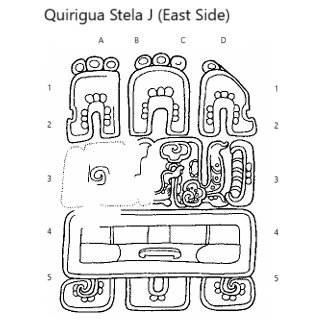
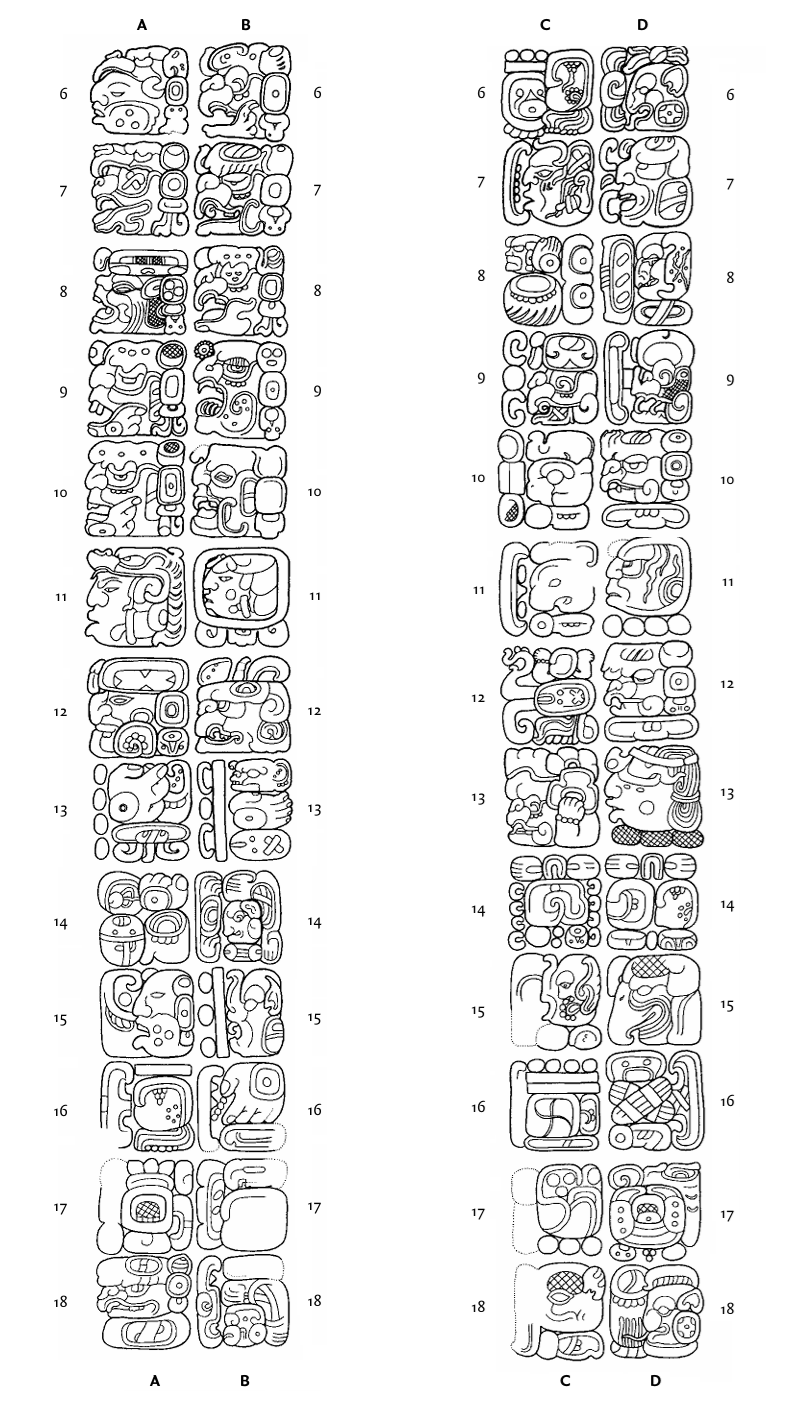
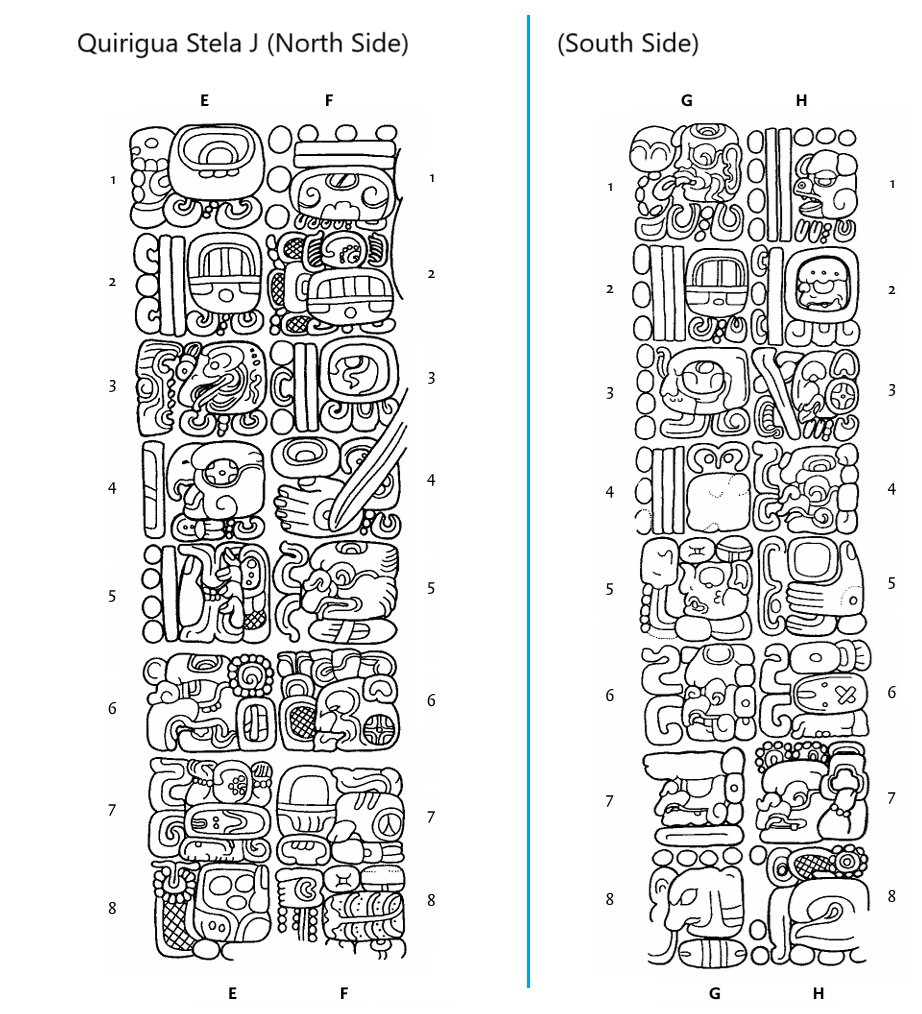
[English only]



If the events are told chronologically (which is not the order they are recounted in the inscription) then the account begins with K’ahk’ Tiliw Chan Yopaat accessing to the rulership of Quirigua in 724 AD. This was with the well-known k’al huun tu’ baah ritual, where a headband was “presented” to his head. On this occasion, the headband had a very elaborate name: Balun Tzakaj K’ahk’ Xook Huun (= “The Many Conjurings(?) Fire Shark Headband”). Thirteen (13) years later (and 18 years before a hotun period ending), in 738 AD, Waxaklajuun Ubaah K’awiil was captured and ritually beheaded. Eighteen (18) years after the beheading and 31 years after his accession (13 + 18 = 31), there was a hotun period ending in 756 AD (9.16.5.0.0). To commemorate this, K’ahk’ Tiliw Chan Yopaat raised Stela J.
K’ahk’ Tiliw Chan Yopaat performed a scattering ritual (presumably around this stela), and did auto-sacrifice. He also performed a ritual where he grasped the K’awiil sceptre, a symbol of royal authority.
The inscription gives both the generic and the non-generic name of the stela. The generic name was “8-Ajaw Stone,” based on the Tzolk’in date of its raising. The non-generic name was Yax Utuun? Xook? (=“The First/Blue-Green Stone of the Shark”?).
One distinctive feature of the inscription is that not only are the coefficients and the units of the ISIG’s LC head-glyphs, but the coefficients and units are each given their own glyph-block. Most of the time, even when both the coefficients and the units of the ISIG’s LC are head-glyphs, each coefficient-unit pair is written in a single glyph-block. A further distinctive feature is the extra-large ISIG. While many ISIG’s are, indeed, larger than the rest of the inscription and typically take the space of 4 normal glyph-blocks (2 columns and 2 rows), the ISIG of QRG Stela J is even larger than the usual, conventionally large ISIG’s, taking, as it does, the space of a full 20 normal glyph-blocks (4 columns and 5 rows).
09.16.05.00.00
0756-04-08
Date(s) in inscription:
09.14.13.04.17
0724-12-29
09.15.06.14.06
0738-04-29
09.16.05.00.00
0756-04-08
[QRGStK]
(with Drawings)

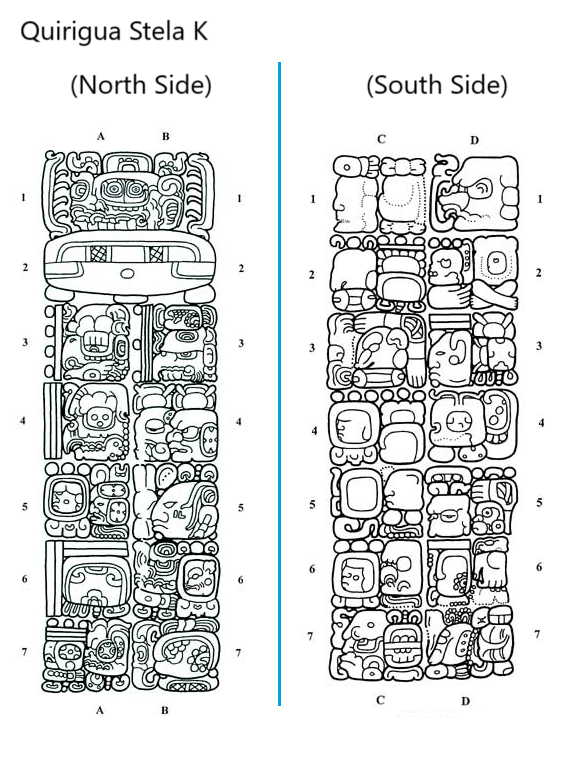
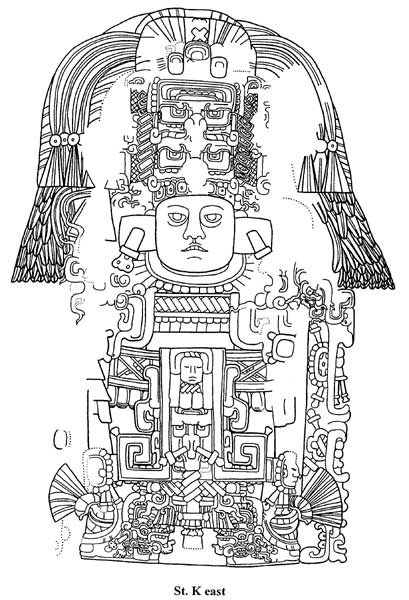
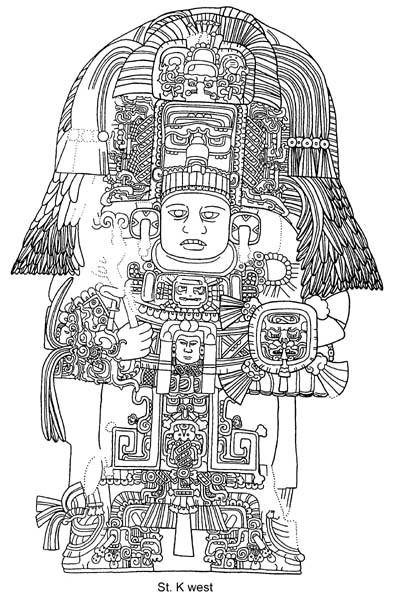
[English only]




He is also the main protagonist of Stela I. Here on Stela K his name is spelled Holow and there Jolow.
The inscription gives both the generic and the non-generic name of the stela. The generic name was “3-Ajaw Stone,” based on the Tzolk’in date of its raising. Unfortunately, it’s not entirely clear what the non-generic name was - it includes the words Ajen and Uk’ahk’.
09.18.15.00.00
0805-07-20
Date(s) in inscription:
09.18.14.07.10
0805-12-22
09.18.15.00.00
0805-07-20